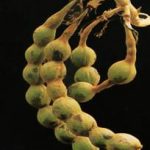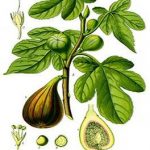TREE LIFE
November 2012
MASHONALAND CALENDAR
November 18th: Outing to Christonbank. Details to follow by email.
November 24th (4th Saturday): No outing.
TREE SOCIETY VISIT TO CATAPú, SOFALA, MOZAMBIQUE Friday, April 6th – Sunday, April 15th, 2012
Final Episode
Friday April 13th A visit to the Catapú Community.
Ant White started working with the Catapú community members in 1999, in an attempt to improve their standard of living and encourage them to move towards more sustainable agricultural practices. The first project was a fishing project on the Zangue River, where the fish caught were salted and dried for sale, as well as a micro-irrigation project where vegetables to be sold to the workers were grown and watered using hand pumps. The project members at this time were given soft loans to pay back and, to their credit, despite the fact that the fishing and vegetable projects never developed into their full potential, the agreed 50% of the loans were repaid. The community leaders and principal participants did not have the skills or an entrepreneurial spirit to carry them through. However both projects still exist, although they are run rather inefficiently and in a localised fashion.
At present the community works with TCT Dalmann on Catapú through a legal and structured development committee, as a development platform. The committee receives 20% of all fees paid to the State by the concession holder, in respect of cutting licenses and land tax, which is paid by the government. These moneys are designed to fund development projects by the community itself.
Running parallel to and in support of this community development ,TCT Dalmann also offers development projects that provide empowerment through training and technical extension. Several sustainable commercial ventures have been established which include rural bee keeping, reforestation of hardwoods, thatching, brick-making, a grinding mill, schools and offices. Each project must have, as primary criteria, the development committee’s approval as well as voluntary and active participation by the community participants. Catapú management encourages joint venture projects where the community participates financially and physically. As an experimental project in 2011/12, they started an agricultural enhancement program as a joint venture with a local NGO, with the specific aim of encouraging farmers to employ better farming practices to raise productivity and reduce soil degradation. Initial reaction has been positive and sufficient interest has been shown to warrant a full time extension officer to be employed in the area.
My tour included a look at the bee project as well as the reforestation that started in 2006. This latter project was begun to try and counteract the practice of slash and burn agriculture that still continues in this area, as well as to provide wood that the community can sell to TCT Dalmann in future. There were 62 project members in 2006 and 100 in 2008/9, all of whom have been given tree seedlings each year that have been diligently planted out and cared for by making fire breaks and cultivating around the trees. There are presently 10,200 trees surviving, which are growing well. There has been an inventory of trees every year and up to this year project members were paid 50c annually for every surviving tree. We met a farmer who proudly showed me the fifteen trees that he has nurtured. At present Catapú has had to stop the payments to farmers until they are able to generate outside funding, because they do not have the funds to continue with it. However their aim is to have 260 farmers planting 500 trees per year, which will, after the 50% casualties, give an average of about 200 new hardwood trees per farmer that survive every year.
The bee project is also an income generation project, started by TCT Dalmann with funding and support from WWF Mozambique. Five hundred and fifty hives were given to three committees, together with training on how to make and manage the hives to produce honey for sale. Members keep some honey for themselves and the rest can be sold to TCT Dalmann or elsewhere. Honey production decreases in low rainfall years because the bees always need access to water, and so last year was a low production year because of the drought and the heat.
The community members are well-pleased with the projects they have been involved with so far, and will continue to participate because of the financial incentives they receive from them.
– Isla Grundy
Saturday April 15th and 16th: the Cheringoma Herbarium
After the party had left on the Saturday morning, Meg, Isla and I got down to some hard work sorting out Meg’s herbarium.
Formerly housed in a container, the herbarium, known as the Cheringoma herbarium, now has its own building. The specimens are housed in one padded room, which is effectively a cold room. A permanently on air conditioning unit keeps the specimens cool, thereby discouraging insect pests, and the humidity low, thereby preventing mould.
Our job was to sort the specimens into their new home. A batch had also been returned from being scanned in South Africa and these also needed to be arranged correctly. We worked hard at this all day, breaking for tea and lunch and finishing at about 6.30 in the evening. Further work followed on the Sunday morning and in the end the job was completed. We had sorted the specimens on the shelves into alphabetical Family, Genus and Species order.
We did manage some botanising on the Sunday afternoon. Ant took us to Mfuma Pan and we photographed and collected some species from the marshy habitat.
Acknowledgements and thanks
The trip was a very great success. Quite apart from the botanical work, the collection of 106 specimens of (mainly) herbaceous plants and the sorting out of the Cheringoma herbarium, it was of very great interest in all sorts of general ways – the animals seen (duikers, suni and nyala) and an insight into Ant’s vision of sustainable timber production. It was interesting for me to be in a different African country and to compare and contrast it with Zimbabwe.
A very great vote of thanks needs to go to Ant and Meg. Mary Lovemore described them both as passionate people. Ant is passionate about ensuring the survival of the forest and its biodiversity by giving it economic value, by careful phased management and by long term replanting. Meg is passionate about woody plants, their recording and ecology, and of course her herbarium.
Both gave of their time freely to assist and educate their visitors.
I would also like to thank the staff at Catapu who looked after us so well. And also I would like to thank the Tree Society members who attended; I am sure that we will never forget what was a once-in-a-lifetime experience.
Finally, I would like to add that in writing the parts of this account, I have drawn heavily from the articles produced by Jane Clegg and Meg, which appeared in earlier editions of Tree Life.
The following people came on the trip:
Tony and Liz Ade; John Bennett; Carolyn and Richard Dennison; Bilal Khatri; Isla Grundy; Mark Hyde; Mary Lovemore; John and Barbara Meikle; Graham Mills; Meg Coates Palgrave; Karl Van Laeren and Annelie Martens
– Mark Hyde
TCT- Catapú Cheringoma Herbarium update
I have just spent a month in Mozambique getting the herbarium really on its feet again. The 105 specimens that we collected during our visit in April have been mounted, other than those that have not yet been identified, of which there are no duplicates. Of the all the unnamed specimens to date 27 have been identified and Mark and I will be having a couple of days in the Herbarium here in Harare shortly to try and identify the rest.
Labels with the family names have been put up on the cupboards. There are now 1753 specimens representing 120 families in the herbarium. Next I need to produce a list of species in alphabetical order so that people can see in which family to find a species. I have been working on a dictionary of vernacular names for the trees in Sofala and that will be available, also cross-referenced to the family to assist Mozambicans use the Herbarium.
Ant has been collecting wood samples so the next thing is to display them, polished and unpolished, creating a ‘xylarium’. The trees at Catapú have all been numbered and Ant has a lever-arch file with an example of most specimens in a plastic sleeve in numerical order. This is called our Quick Guide and still needs to be brought up to date. We also plan a display of fruits such as the baobab and sausage which are too big to be pressed.
I am very happy with what we have achieved but there is still more to be done, including continuing to collect specimens.
– Meg Coates Palgrave
TREE OF THE MONTH
Artabotrys brachypetalus
Family: – Annonaceae. (The custard apple family). Botanical name: – Artabotrys brachypetalus Common name: – Purple hook-berry, Nd: Umdzidzi: Shona: Mukosvo.
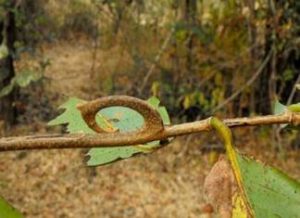
Artabotrys brachypetalus – hooks
The Annonaceae family is represented in Zimbabwe by the following: Cleistochlamys kirkii; Friesodielsia obovata; Hexalobus monopetalus; Artabotrys brachypetalus, and Xylopia aethiopica. In Southern Africa there are some 20 species, mainly tropical. If you look at the list of names above, all those found in Zimbabwe come from lower, hotter areas: Kariba, the Honde Valley, Sentinel, Kariba and at Hippo Pools on the Mazowe River.
Depending on its location the tree can be a multi-stemmed, low spreading tree like most of the specimens found in the Matopos, or in hotter wetter areas it becomes a large liana like those in the campground at Hippo Pools. The bark varies from a smooth grey to a rough texture in the older, bigger specimens.
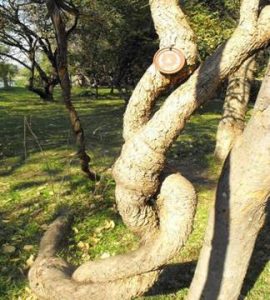
Artabotrys brachypetalus – tangled growth
The tree climbs by mean of distinctive curling flower stalks (peduncles) shown above. The leaves are ovate to elliptic-oblong, 4,5 cm to 11 cm long and 2 cm up to 7 cm wide. They are bluish green to glossy bright green, sometimes finely hairy above, always dull and often velvety below, lateral veins looping round and joining up almost at the margin; apex broadly tapering to almost rounded, often sharp-tipped; the base is broadly tapering to rounded; the margin is entire and the petiole short.
The flowers are about 2 cm in diameter. The sepals are hairy, bending well back, and the petals are yellowish, rather cup-shaped. The fruits form a cluster of up to 6 carpels, long, elliptic, and purplish black when ripe. The fruits mature from December to March and are edible.
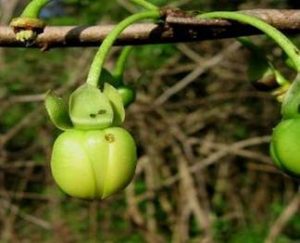
Artabotrys brachypetalus – custard apple
As usual there are some medicinal uses of the plant, particularly in Malawi. An infusion of roots is taken to treat infertility in men. An infusion of the roots is also made for convulsions and used to wash the body as well as taken orally.
-JP Felu
Dr Tom Muller’s 80th Birthday Party Harare Botanic Gardens 21st October 2012
Episode 1 (photos by Dave Hartung)
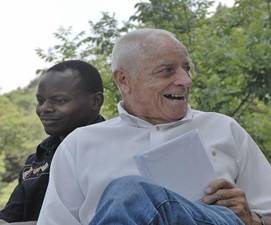
Tom Muller on his 80th birthday
Tom Muller turned 80 on 2nd September 2012 but as he was away in the UK in September, the Tree Society held a party to celebrate this special occasion on 21st October.
It began with a walk through the Gardens, led by Tom himself, and it was good to see more than 60 people in the group. Following the walk people gathered for the speeches at tables that had been set in the shade under the trees near the restaurant. Libby Wood kindly did the flowers. Luckily there was a slight breeze so mostly we didn’t feel the 32oC.
Ten people recalled Tom’s life in Rhodesia and Zimbabwe over the 50 years since Tom first arrived in the country, with many amusing anecdotes. There were also messages from former Tree Society members overseas.
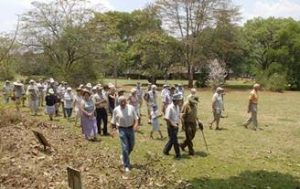
Walking with Tom in his garden
The speeches were followed by a delicious lunch organised by the Botanic Gardens restaurant with wine provided by the Tree Society.
Tom received numerous presents, including a meal for himself and friends at his favourite restaurant from the Aloe and Cactus society and some wire trees for wall mounting from the Tree Society.
Below is a summary of the speeches that were given.
– Ed
Tom’s biography – Mark Hyde
Dr Thomas Muller was born in Switzerland on September 4th, 1932. He recalls, probably modestly, that he was a poor performer at school and that the only one of the offered career options which appealed was to become a gardener. This was the least unattractive option and Tom describes it as “negative selection”. However, at his interview, the interviewer was impressed that he knew all the names of the native trees.
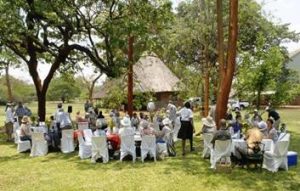
Gathered for Tom’s birthday party
Tom did a three-year horticultural apprenticeship at Zurich from 1948 – 1951, specializing in alpines, perennial herbs and shrubs (but not trees). After that he continued horticultural work in Switzerland and underwent National Service.
From 1954 to 1956 he did a horticultural course at the Royal Botanic Gardens, Kew, thus marking the start of his connections with the English-speaking world. It was at this time that he met his wife-to-be who was also working at Kew, in her case practicing the art of topiary. Rather romantically, they met while cycling over Kew Bridge on the way to work.
After one year spent back in Switzerland, Tom returned to London to work for Arthur Exell at the British Museum (Natural History). The Flora Zambesiaca project was getting under way at the time and Tom worked on that for 3 years from 1958-61 and contributed the account of the family Geraniaceae. Around about this time Hiram Wild who was Chief Botanist in Salisbury visited the BM and recruited Tom to work on the about-to-be-started Botanic Garden. Tom arrived in Zimbabwe (Rhodesia) at the end of February 1962.
On arrival it turned out that most of the available funds had been spent on the new herbarium building. However, eventually, a substantial donation of £50,000 was received from the Combined Oil Industry, who were looking to donate money to the environment, and this enabled the irrigated areas and the pond to be created.
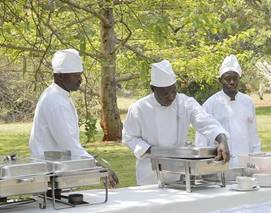
Preparations for Tom’s party
Right from the start the Garden was divided up by Tom into the various ecological zones we know today, largely in accordance with the topography of the area, the existing vegetation and the availability of water. For example, an area with msasas formed the basis of the savanna section and the forest section was created in the most degraded open areas, its size being determined by the supply of water from the boreholes.
Tom’s ideas were to consider both the aesthetic appearance and the science and not to compromise on either. The Garden took time for the trees to mature and the forest section took until the 1980s and 1990s to become a significant forest.
Throughout this period, Tom was not idle in his spare time and acquired further qualifications culminating in a degree from the University of London in 1972. In 1975 he became head of the Herbarium and Botanic Garden.
During the bush war, Tom was asked by the army to plant barriers of spiny plants and he had a huge nursery at Victoria Falls at which Acacia ataxacantha was grown in large quantity. Tom recalls that the men he was given by the army to plant the trees were not interested and he ended up doing much of the physical labour himself.
He retired as Head of the Herbarium and Botanic Garden in 1992 but subsequently was retained as a consultant at the Garden advising on some significant European Union donations in the period up to 1997. He also was awarded an honorary doctorate.
Earlier, from 1985, he had taken jobs as a consultant in Environmental Impact Assessments and as a landscaper (for example at hotels at the Victoria Falls) and he has continued in these roles up to the present day. Only last year he was still involved in strenuous and physically demanding work in Gona-re-Zhou National Park. Tom admits that he has published relatively little. Probably his most important work has been on the classification of the vegetation of Zimbabwean forests.
Tom has had an extensive involvement with the Tree Society over a long period of time. For many years, he led a walk each month in the Botanic Gardens at which he would attempt to educate the Society on a particular family or genus. What a fabulous living collection we have, which enables us to see live plants of all the species of, say, the genus Grewia. Tom also came with us on at least three major outings: Gona-re-Zhou, Eastern Highlands Tea Estate and Nyanga, at the last one of which he managed to get us lost in dense and difficult vegetation.
For me, one of Tom’s greatest gifts is to be able to “read” a habitat – this might be a patch of forest or woodland (or indeed grassland or any other habitat) and to be able to interpret what we are seeing. Is the forest in a pristine or primary state or is it secondary vegetation much affected by man.
I had the good fortune to visit Madagascar in 2010 and do a week-long tour with Tom which took us from the capital through degraded grassland, forest and later increasingly dry zones finishing in some extraordinary dry forests on the east coast. Even there, in an unfamiliar environment, Tom was able to analyse and explain the vegetation that we were seeing.
Colin Saunders
Tom was always a welcome and stimulating visitor to our home when Jenny and I lived in the Lowveld. We loved the Lowveld’s trees, especially the riverine species along the rivers. Tom patiently identified them for us, and explained how they fitted into the Lowveld’s rich plant communities. In so doing, he fostered in us a life-long fascination in the local trees.
He was one of the most enthusiastic people we ever met. He was a fund of knowledge, and enjoyed sharing it with anybody who was interested. In addition to his passion for his subject – distribution and ecology of woody plants – he was possessed of several interesting attributes.
On one of our first trips into the Lowveld bush he spied a small plant on the skyline, right at the top of a steep gomo. He was out of the Land Rover in a flash, ran up the kopje at an unbelievable speed, and returned speedily, without raising a sweat, and well satisfied, with a prized specimen. What unbelievable energy!
On another occasion we were driving along the edge of Chinzwini Dam on Lone Star Ranch. Tom shouted “Stop!”. He leapt out of the vehicle, stripped down to the scantiest clothing that could be worn without becoming indecent, and dived into the water. “What are you doing?” we shouted anxiously. Between vigorous freestyle strokes he replied “Look at that yellow water lily – it is a Mozambican species that has not been taken in this country”. He dived under water, and disappeared. No waves, no bubbles, no sign of our friend. After what seemed an age, he burst onto the surface, triumphantly holding aloft dismembered portions of the precious lily. Hazards from crocodiles and bilharzia never crossed his mind. He is adventurous and fearless.
Returning from the bundu to our home during his first visit to stay with us, Tom arrived in time for a light supper. Waiting in the oven was a large quiche lorraine, one of three that Jenny had stored in the freezer, she had decided to share it between the three of us. To cut a long story short, our guest demolished two and a half quiches in no time. What an appetite! A housewife’s dream! – and how else could he generate the energy required to fuel his restless flat-out life-style?
Ah yes, a one-of-a-kind fellow is our Tom. What a privilege for so many of us to have him as a friend and soul-mate.
Kerry Wallace
I am honoured to be asked to speak, but more honoured to count myself as one of Tom’s friends. It is said that every young male needs a mentor and role model once in their life and Tom is certainly mine, and my kids’. For me it is Tom’s honesty and humility, no pretensions there, he cringes at the very thought of anyone singing his praises.
It feels like an obituary that I am writing, but given Tom’s spartan lifestyle he will probably be reading mine. There is only one unhealthy thing I know he does, which appears to disprove the facts. The other day I dropped in to his flat unexpectedly and found him spread-eagled on his chaise longue, sweating in the noonday sun. That’s why I like Tom so much – only mad dogs and Englishmen go out in the noonday sun.
I first met Tom in the early 80s when I was working at Landscapes Nursery. I applied for the position of head gardener at La Rochelle. Armed with my diploma in horticulture (from England no less) I went to the interview to face Tom and Mike Kimberley. Despite my enthusiasm Tom pointed out that just because I knew how to make compost didn’t mean I knew how to look after a garden with such valuable plants…..well OK.
However, thanks to Tom I didn’t end up in Mutare and of course a few years later I did manage to get the job of senior horticulturalist at the newly built Sheraton Hotel in Harare, to start a prestigious garden from scratch. And guess who was to design it? Tom himself and here started a long working relationship with Tom. This time my lack of experience and genuine enthusiasm (this was the new Zimbabwe and things looked good back then) spurred me on. Of course anything Tom designed was faultless, although he did allow me my tuppence worth and I basked in the glory of thinking that it was my garden.
Thereafter through his encouragement, making the time and giving me access to the Botanic Gardens’ incredible variety of seeds and plants, I was able to establish Emerald Seedlings as one of the first indigenous plant nurseries in the country. This was of course to both our benefit, but I think I speak for all of us here, we have certainly benefitted more from Tom than he has from us. So, thanks to the Tree Society for organising this occasion. Tom was always available to help with gardens and designs I was stuggling with, not just indigenous plants but all plants suitable for garden use in the wonderful growing climate we enjoy here. Again to Tom’s credit, he had no bias, what a fantastic attribute.
There is no-one who compares to that mad murungu riding around Harare on his bicycle, or that weird-o, shirtless and in his shorts, sweeping up street litter on Tongogara Avenue to make compost for his garden (and what an amazing garden in that little space). But what really makes Tom crazier than the rest of us is that a few years ago I was lamenting how I thought being a garden / landscape designer was the most soul destroying profession in the world, what with the variable climate, never mind the ignorant gardener with a cutting tool in his hand, not to mention the current state of the National Botanic Gardens (his life’s work) and he casually said given the funding he could restore the Gardens to their former glory in three years. Tom for once sit back, relax and enjoy the day, and thank you, shamwari.
TO BE CONTINUED…………


